Sony Xperia 10 II Review: vastly improved but still falls short
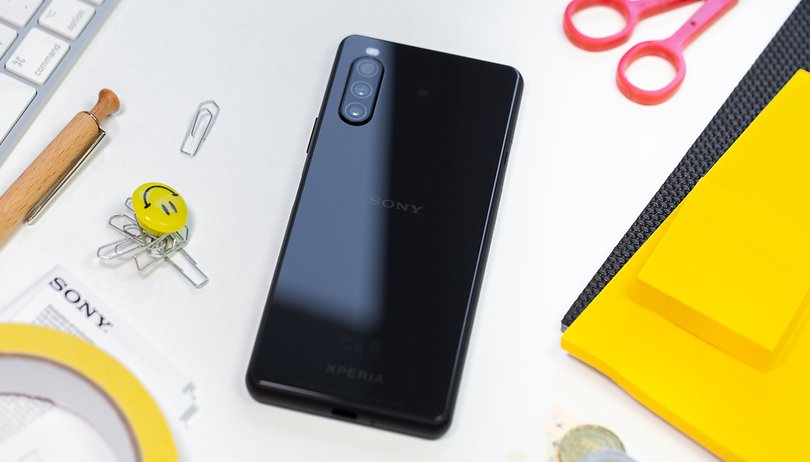

Sony maintains its smartphone recipe and the 21:9 format in the mid-range market with the Sony Xperia 10 II or "Mark Two". After spending a couple of weeks with it, the Sony Xperia 10 II happens to mark a giant leap forward compared to its previous generation, although that is not quite good enough to make it a viable choice for a phone that retails at around $400.
Good
- Compact and utilitarian build
- Intuitive design
- OLED display
- Stock Android 10 interface
Bad
- Limited camera capabilities
- Disappointing processor performance
- Fast charging is not fast enough
- Better choices at this price point
- The 21:9 format remains a fad
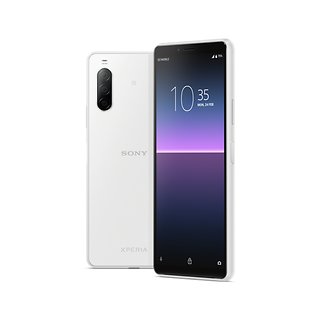
Sony Xperia 10 II release date and price
The Sony Xperia 10 II has been available since June 12, 2020, at a price of €369 ($400) in a single configuration of 128GB of storage and 4GB of RAM. In the United Kingdom, the price is £319. It arrives in a couple of colors: black and white.
Sony Xperia 10 II: who is this smartphone for?
With its price of around $400, the Sony Xperia 10 II has clearly placed itself in the highly competitive mid-range smartphone segment. At this price point, we find a 6-inch OLED display in Full HD+ resolution, a 60 Hz refresh rate, a Snapdragon 665 processor, and 4GB of RAM to be par for the course.
At the back of this device lies a triple camera module that delivers a 12-megapixel shooter, accompanied by a telephoto lens and an ultra-wide-angle sensor, a fingerprint reader on the edge, IP 65/68 certification, a 3,600 mAh battery with 18W quick charging, and a 3.5 mm headphone jack.
So that we're clear about it, this is not a flagship killer but the technical specifications are far from being poor and are much more dreamy than those of its predecessor, the Sony Xperia 10 which was released last year. However, at this price point, the Sony Xperia 10 II has some serious competition out there: the Realme 6 Pro (€350), the Google Pixel 3a ($399), and the Redmi Note 9 Pro (€299).
It is obviously intended for Sony fanboys who swear by the brand. But it also has, on paper, everything to please fans of compact, utilitarian, and generally easy-to-use smartphones. In any case, it is much more affordable than its big brother, the Sony Xperia 1 II, which sells for a whopping €1,199 (around $1,350)!
I liked the Sony Xperia 10 II for...
... Its compact and neat design from top to bottom
From the first time I laid eyes on the Sony Xperia 10 II, I immediately thought of Google's Pixel 4. The smooth glass back and the borders accompanied by a matte black finish are really a great combo on the eyes. The front retains a wide chin as well as a rather notable forehead (waist/screen ratio of 77%). Thankfully, the screen is not punctuated by a notch or a punch.
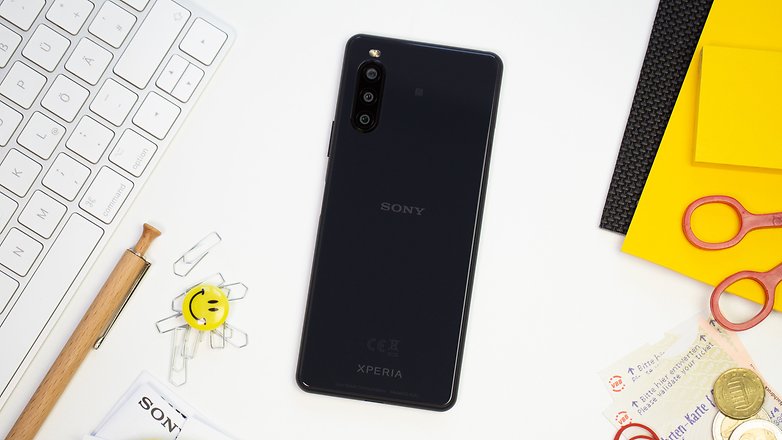
One of the best things about the rear camera module is this: it has been arranged in a slim island that protrudes very little, much to my joy. With its 21:9 format, the smartphone is very long and yet also very slim. It is very easy to use with one hand and fits in my palm perfectly. I've never been afraid to drop it and I really enjoyed its secure grip. The fingerprint reader on the edge is also located in the right place, where it is neither too high nor too low with an impressive recognition time.
It's also ultralight, tipping the scales at 150 grams. While this is not the most flashy smartphone around, but I really liked its simple, sleek, and primal look that is reinforced by the slightly rough matte plastic borders.
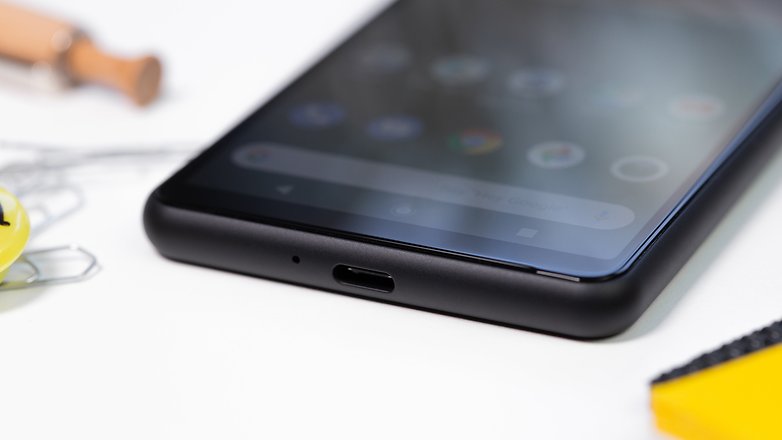
You can find all of the Sony Xperia 10 II's photos by AndroidPIT in this Google Photos album.
... Its OLED display (but remains a fad)
The Sony Xperia 10 II features a 6-inch OLED panel instead of the LCD panel found on the previous model. My other colleagues who have an eye for detail have noticed calibration problems with colors that are too cold by default, where they tend to turn blue.
However, this smartphone comes with many tweakable settings where the white balance and RGB curve are concerned, which are enough to cover most of the DCI-P3 spectrum (the range of colors visible to the human eye. Full HD+ in 2520 x 1080 (457 dpi) resolution is satisfactory, but switching back to a 60 Hz is rather a let-down in 2020.
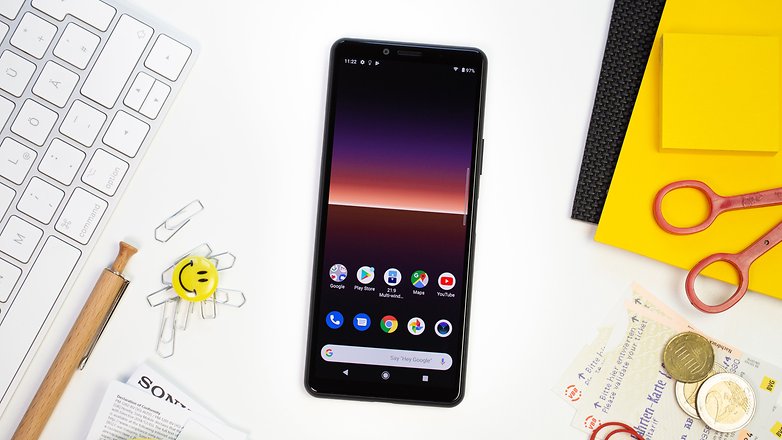
I, therefore, welcome the transition to OLED which can be said to be partly successful. But I still haven't changed my mind about the 21:9 screen format, which remains, in my opinion, a simple fad, especially with such a "small" diagonal measurement. Whether you are playing a game or watching videos, you will have to deal with the black edges of the display (on the chin and forehead) as well as big borders on each side when enjoying YouTube or Netflix.
Often you'll just have to stretch the screen, as on other 20:9 screens, which is rather disappointing for a format that boasts of immersion. Especially since when my big thumbs combined with the big edges on each side of the image result in far less visibility on the display. Hence, that's a good thing for the screen of the Sony Xperia 10 II.
... Its intuitiveness (but has a very, very slow charger)
This is the big highlight of the Sony Xperia 10 II, as it often is at this price range. The battery life is simply excellent and yet the 3,600 mAh battery is nothing to boast about in 2020. With the PassMark benchmark, the Sony Xperia 10 II lasted 12 hours (screen on continuously) before having the remaining battery life drop below the 20% mark.
In actual use, the smartphone very easily holds up for two full days of "normal" use. I didn't even have to use the battery saver or "Stamina" mode". Sony also offers a "Battery Care Mode" that adapts to your usage and stops charging the smartphone fully when you're not using it at all to preserve its life.
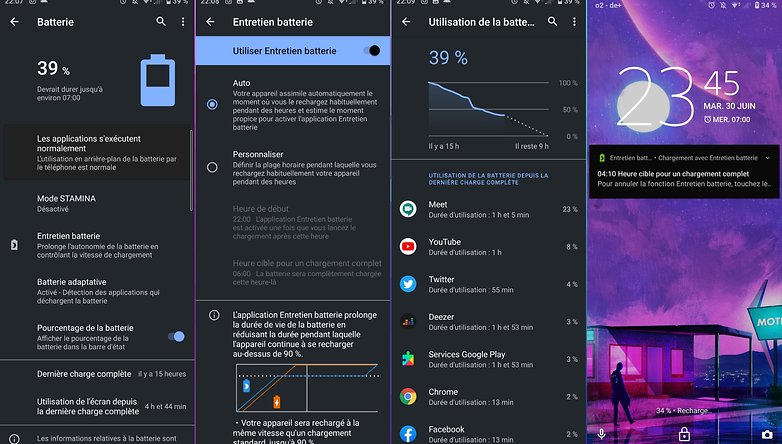
On the other hand, the recharge is very, very, very slow. The smartphone accepts 18W fast charging, but Sony only provides a 7.5W charger. 4 hours and 10 minutes to go from 34% to 100% battery life is simply unacceptable today. This grates even more when you know that the Realme 6 Pro comes with a 30W charger right out of the box.
In a nutshell: its design, screen, and especially battery life are the strong points of the Sony Xperia 10 II, but it is only the intuitiveness of the smartphone that really surpasses its competitors. Let's take a look at the weak points now.
I liked the Sony Xperia less for...
... Its crawling performance which spoils its good interface
The Sony Xperia 10 II features a Snapdragon 665 SoC and 4GB of RAM. This is less impressive on paper compared to a Realme 6 Pro or Redmi Note 9 Pro, where both of them come equipped with the Snapdraon 720G chipset and are sold at a cheaper price point. This configuration is similar to that of the Redmi Note 8T, where Xiaomi's handset is sold for half the price.
In terms of performance, the Sony Xperia lags behind. Badly. I particularly felt it when playing the game Call of Duty: Mobile, where I had to seriously limit my graphics settings with the Adreno 618 GPU. As if that is not bad enough, I also felt the slowdown when it came to handling more traditional, everyday usage.
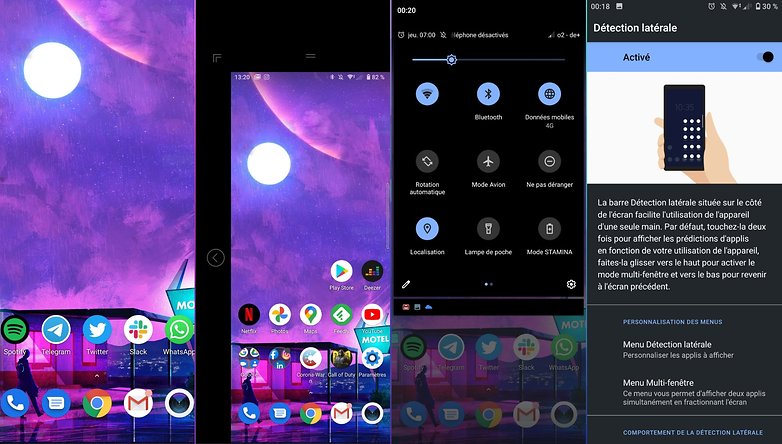
The interface in Android 10 stock mode is very easy on the eyes. However, as soon as you begin multitasking, the smartphone slows down drastically. Launching large applications can sometimes take seconds, and the 4GB of RAM does not seem to help in any way at all.
This is quite a pity because the interface itself looks quite nice. It's sleek and very minimalist in terms of visuals. We've got the classic settings of dark mode, gesture navigation, and other digital wellness options. Sony has also integrated a shortcut pane to launch your favorite apps, offer a one-handed display, and native multi-window capability.
There is a pane, which is visible in the form of a small vertical bar on the right side of the screen, also serves as a "back" button if you pull it down, which is a big plus for one-handed use.
... Its camera module too limited and the AI needs to work overtime
The Sony Xperia 10 II comes with a triple camera module on the back:
- a 12 MP f/2 wide-angle sensor (26 mm)
- a 12 MP telephoto lens with 2 f/2.4x zoom (52 mm)
- an ultra-wide-angle sensor 8MP f/2.4 (16mm)
Sony's camera app is not the most intuitive, and the different modes are not always clearly identifiable at first glance. By day, the rendering does all right but it still falls well below what a Google Pixel 3a, which was released last year, can offer.
The focus is capricious and the exposure very poorly managed. Before each shot, I found the image to be far too dark on the screen. Instinctively, I tapped the screen to automatically adjust the exposure and I always ended up with an overexposed scene.
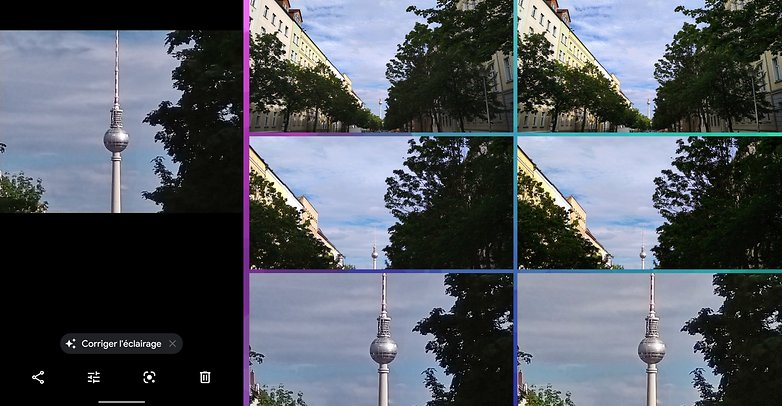
So I left the smartphone alone in the car without touching anything. And the pictures turned out to be indeed quite dark. The dynamic range is simply too narrow. Sony even offers to "correct the lighting" afterwards, to make the pictures artificially brighter and therefore far more palatable to the eyes.
In reality, the corrections made did not change much, except that it overexposes the pictures if they are already rather bright, which ends up unbalancing the dynamic range even more and saturating the colors that were correctly reproduced in the original picture.

I'm going to switch to the 8MP selfie camera now, which sounds far better on paper than it is in real life, just like the "telephoto lens" which offers a reasonably accurate optical zoom of x2, but only at x2. Once it goes beyond this magnification, there is a noticeable loss of information, and the maximum 10x zoom offered by Sony is just usable, nothing more.
At night, the result suffers from the same problems as during the daytime but is further aggravated by the lack of light. We have a lot of digital noise, even with the night mode turned on, where the image lacks sharpness since the software smooths the scene excessively, in order to limit the amount of noise.
Lighting correction can also be applied to shots taken in night mode, where an overlay of filters only saturates the colors and impairs white balance in the process.
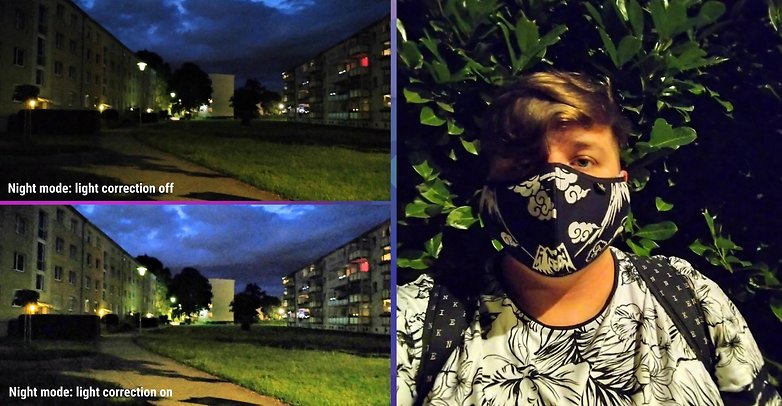
In short, Sony has decided to settle for a similar camera formula for the Xperia 10 II in 2020 as it did with the Xperia 1 that was released last year. Unsurprisingly, the result is negative. It's clearly not a good camera phone at this price point.
You can find all the photos taken by the Sony Xperia 10 II by AndroidPIT in this Google Photos album.
Conclusion: Is the Sony Xperia 10 II a good choice?
The Sony Xperia 10 II marks a giant step forward from the previous generation, but it's still not enough.
We go from an LCD screen on the Xperia 10 I to a nice OLED display, but whose 21:9 format remains a fad in my opinion. The intuitiveness is simply excellent, which is among the best on the market, but the recharging capability is sadly one of the slowest (with the included battery pack). You would do well to pick up a third-party charger as well.
Everyday performance capability and photos are big disappointments, even for a mid-range model. If you're looking for a camera phone at less than $400, the Sony Xperia 10 II is clearly not a good choice and I recommend a Google Pixel 3a instead.
In terms of power, a Redmi Note 9 Pro does better, on paper at least (I haven't reviewed it yet), with its Snapdragon 720G and 6GB of RAM, which sells close to $100 less than the Xperia 10 II.
So I do not advise you to buy the Sony Xperia 10 II, in any case not at the price of four-hundred bucks because you can find something better or at least as good for $50 or even $100 cheaper from other handsets in the market. This is unless you are a hard-core fan of the brand, in which any case my review will have no impact on your final purchase decision anyway.
Read also on AndroidPIT:
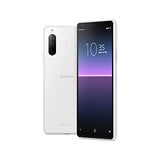














Here we go again another tech website slagging Sony off for no reason at all, I'd much prefer a phone made by a Japanese manufacturer than Chinese. My middle son got this phone through his work & he is a diehard Apple fan, but he is slowly thinking why pay so much for a name. He really likes this phone, like I mentioned on another review on here, Tech reviewers are easily lead & brainwashed, it's the sheep mentality coming back again.
-
Admin
Jul 8, 2020 Link to commentAs usual with Sony great design and great screen and that is about it
Oh my good. Get it into your heads, their is a reason for why SONY chargering work that way. ITS because fast charging isnt ACTUALLY good for you phone. It actually makes batteries less reliant and wont hold as long. SONY therefor made a software tweaks that should make the battery HOLD longer. Its strange, that despite sony battery will maintain a longer time than other brands, reviewers still think FASTER is better. And the truth is, SONY charge actually as fast as all the other brands, its just that it STOPS charging at 90% and then wait until you need it.
I actually have this phone, and yes the speakers aint that good. Just because its mono-speakers and front-facing they are to much directional. The speakers sounds just find, if you hold the phone in portrait mode, the sounds i good. (Not perfect). If you hold it landscape, only one ear gets all the sound, and it actually sounds bad. But the phone is really good. Battery is great, screen is great, maybe a little dim. Camera works good. Its not for a pro but works good for me. And its never really get hot. I would definately recommend this phone to anyone that need a reliant phone with a good screen and battery.
Hi
I've got this phone and I really like it. The camera is fine for a mid ranger. There are better out there but it is good for quick snaps for social media. The screen quality is really good and the battery is brilliant. As for performance, it's great for everyday use. I am not a gamer so I'm not sure how well it will work with heavy graphic games. All in all a nice mid range device.